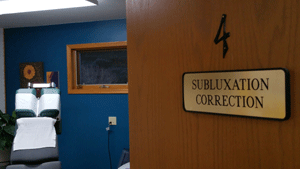Pinched Nerve
It’s called a pinched nerve because that’s what it feels like. But there’s a lot more going on!

Like an open window, nerve openings along your spine must be clear and unobstructed.
The 24 moving bones of your spine protect your spinal cord while permitting normal turning and bending. Pairs of nerve roots, one on each side, branch off your spinal cord at each segmental level to service the organs and tissues of your body. When these openings are obstructed, even slightly, your brain can’t properly control and regulate your body.
When a spinal bone is malpositioned, it can encroach upon these important nerve openings. Nerve irritation can result. We call that a nerve interference.
Two Types
When spinal bones lose their normal motion or position, it can cause one of two types of nerve disturbances:
- Compressed lesion – This is just a fancy name for a pinched nerve. What surprises many is that it’s actually quite rare. More common is a…
- Facilitative lesion – This is when the nerve root is stretched, twisted or chafed. Think: hard tissue rubbing on soft tissue.
But remember, bones are static structures. They don’t move unless muscles move them. And muscles don’t move bones unless commanded by the nervous system. An irritated nerve creates a vicious loop. Our job is to locate these areas of your spine and reduce their impact on your nervous system.
A Precise Nudge
A thorough examination helps us identify areas of your spine where spinal bones are stuck and not moving correctly. Then, we give them a precise little nudge called a chiropractic adjustment. Your body uses this energy to “right itself” as nerve irritation is reduced.
Because chiropractic addresses the integrity of your nervous system, it’s a natural solution to many health problems. Give us a call.
Frequently Asked Questions:
- How long does it take for nerve irritation to be reduced?
Some patients experience almost instant relief. Others discover it can take many weeks or months. Many factors can affect the healing process. How long have you had your problem? Are you keeping your appointments? Are you getting the proper rest, exercise and nutrition? Do you smoke? Are you in otherwise good condition? Within a short period, most patients sense enough progress to justify completing our recommendations.
- What about my friend who only needed one visit?
It’s true there are rare instances in which a single visit can produce the pain relief that many patients seek. However, the effect is often short lived. Because underlying muscles and soft tissues have not been strengthened and retrained, a relapse often occurs. Our experience has found that when patients begin chiropractic care as adults, they have considerable structural and functional damage from years of neglect. A single “miracle” adjustment rarely produces permanent change.
